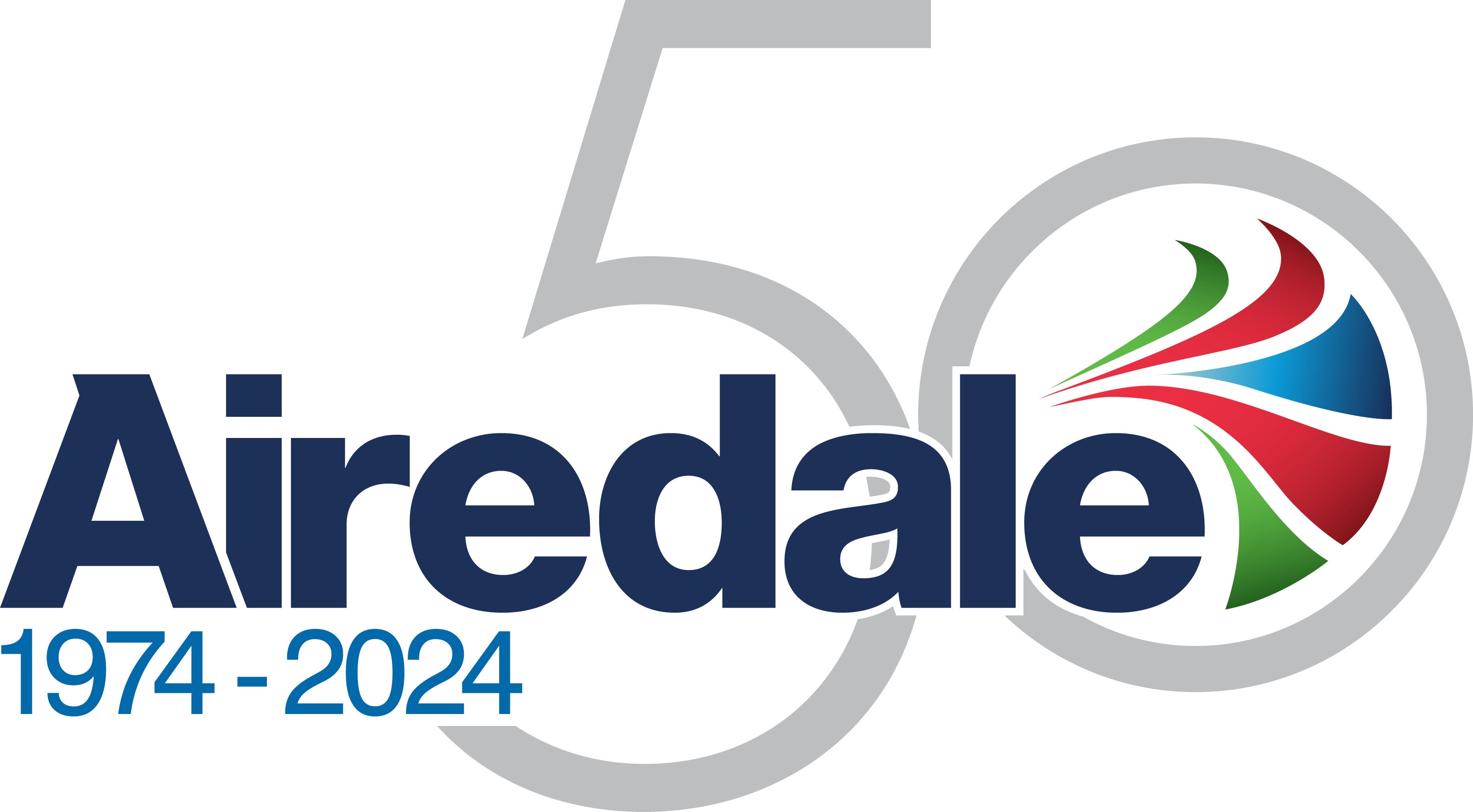AHU and Chiller Optimisation
Taking a systems approach to chiller and AHU optimisation

Worldwide demand for sustainable cooling and ventilation solutions continue to grow, and government policy is starting to reflect the societal movement towards reducing the impact of industrialisation on our planet. The cooling industry is no exception, and it continues to be challenged to find more efficient solutions, that deliver reduced emissions, reduced energy consumption and reduced waste, without compromising on performance. Here we look at how taking a systems approach to chiller and AHU optimisation can lead to missed opportunities for efficiencies.
Reducing carbon dioxide levels generated from man-made trades and work practices is now a priority for many governments, legislative bodies, organisations and individuals as the threat of global warming becomes all the more evident. As a responsible manufacturer, this is something Airedale has been working on long before legislation started forcing the hand of our competitors. Having squeezed out every bit of efficiency from individual product families, we are now taking a more holistic view of efficiency and energy optimisation. We recognise that the sum of the whole is indeed much greater than the sum of its individual parts, and we are delivering substantially increased efficiencies as a result.
It is a perhaps surprising reality in the HVAC industry that two key components of a HVAC system: Air handling units and chillers, are very rarely considered as part of one cooling and ventilation system. This product-focussed approach leads to missed opportunities in terms of energy efficiency and performance.
With the benefit of a “one Airedale” approach across cooling and ventilation, we have been able to set up a task team to consider how ventilation, cooling and controls can work together to deliver the incremental benefits that can make a difference to the commercial, healthcare and other comfort-cooling applications we serve.
Start at the end
Starting with the end-user in mind, it is crucial to consider the balance of temperature and humidity. Both factors contribute to the health and wellbeing of the occupants, however the energy used to satisfy these requirements can often be overlooked.
Typically, designers use water temperatures as low a 6°C in comfort applications to manage both the temperature and humidity in the space. This water temperature is often employed to cover the worst case scenarios and often remains a constant, even the though humidity safe zone can be managed within *40-70RH% and the load varies throughout the year. (*The Chartered Institute of Building Services Engineers recommends that the relative humidity levels in offices should be between 40% and 70% to ensure the ongoing comfort of everyone there.)
In applications such as this, where the cooling load and humidity can vary, there is a startling opportunity to adjust the chilled water set point and flow, which would deliver improved system efficiency, while still maintaining the conditions within the space.
Variable Temperature
If we take a ‘typical’ 200kW cooling application operating at 6/12°C supply/return water temperatures, the annual energy used by the chiller would be around 30,463kWh, based on 8 hours per day operation over 5 days a week. This is a significant amount of energy and has been designed to maintain a fixed supply water temperature, regardless of load, to cover the relatively few times when maximum load is required. This is something we frequently come across.
The issue with this is of course, is that this machine is operating with temperatures required for peak summer days when cooling demand is highest. Here in the UK, those days are few and far between and as such, for at least half of the year, typically during spring and autumn, the demand for cooling is much lower. This obviously presents an opportunity to increase the chilled water set-point and manage the AHU chilled water valve, but is rarely allowed for because most buildings don’t have someone on hand to make manual adjustments as and when required.
Automatic Set Point Adjustments
Of course, it isn’t realistic for every building to employ maintenance teams with the cooling expertise that would allow them to adjust set-points on an hourly, or even daily basis. That is why Airedale’s controls and product teams have been working together to develop a system that delivers automated optimisation. This means reducing temperatures and water-flow in response to reduced cooling demand, which in turn delivers greater efficiencies, energy reduction and significant savings in operational running costs. Employing a control system that can dynamically adjust itself while maintaining the design conditions is the key to driving reduced energy consumption.
The table below represent typical savings that can be provided by increasing the CHW set point on a chiller in 2°C increments.
| Unit | Flow temperatures [°C] | Total Capacity | Variation from 200kW | Kw/Hrs | Running Cost Variation |
| Airedale DeltaChill | 6/12°C | 200.1 | 0 |
30463 |
£0 |
| Airedale DeltaChill | 8/14°C | 212.8 | 6% |
27526 |
-10% |
| Airedale DeltaChill | 10/16°C | 225.8 | 13% |
24698 |
-19% |
Variable Flow
Variable-flow control can be applied to both primary only, primary and secondary systems in single chiller or multiple chiller applications. This means that with the introduction of some extended control logic, incorporating pressure monitoring and bypass valve control, we can effectively manage the system dynamically. This ensures that energy usage is kept to an absolute minimum and increasing efficiency as the building load flexes throughout the year.
The design of the system will allow reduction in water-flow within the system, provided the evaporator minimum flow requirements are always maintained. The pump speed is therefore regulated while continually monitoring pressure within the system. Specifically, when a 2-port valve starts to close (due to a change in load) the pressure therefore changes accordingly. The pump is then managed to compensate for the change in pressure, reducing its speed as necessary. In instances where the minimum evaporator flow rate is reached, a system bypass valve is then managed to maintain a safe operating condition. The bypass valve will then close once the minimum flow-rate has been achieved.
50% reduction in flow-rates
Typically, we would expect to see flow-rates reduce by anything up to 50%, making a significant contribution to energy reduction with only few minor changes to the application of the product and system. This is achieved without the need for more expensive primary and secondary systems incorporating low-loss headers.
How does this fit into a systems approach?
Chiller optimisation is essential, but it isn’t new and it is only one part of the system and therefore one part of the solution. Maintenance teams must also consider the ventilation of their building, and how this factors with the chilled water system. By considering the system as a whole, there are more efficiencies that can be realised.
Valve Optimisation
Typically, a chilled water valve will react to room temperature by opening and closing as load varies in the space. In instances where the valve position remains marginally open (low-load) there’s an opportunity to reschedule the chilled water set-point up to maintain the valve at 90 / 95% open. By increasing the chilled water set-point, the load reduces on the chiller…meaning greater energy efficiency can be obtained.
Coil Selection
Making dynamic changes to the flow and set-point will have a bearing on the cooling coil characteristics, therefore it’s important to have a full understanding of how the system will react and perform. Working with a solution provider who can offer the full system will allow them to ascertain the optimal operating condition to derive maximum efficiency . This would include recommendations on increasing coil size and coil streaming to allow higher water temperatures to be utilised, all while managing the comfort condition within the space. Initial consideration would be to understand the impact of increasing the coil size from the onset, taking into account the initial capital cost and energy benefit provided from the system. In many instances minor changes to the coil arrangement will permit a more flexible and adaptive cooling solution to be adopted. Similarly, if the AHU coil can be situated in an indoor plant room, there is no need for frost coils when paired with a very efficient heat recovery device such as a thermal wheel. This can then lead to further load reductions as the energy from the internal space is recovered to further reduce the load on the chiller and boiler plant.
Taking a Collaborative Approach to System Optimisation
Ensuring individual units are correctly optimised is the key to delivering a robust and energy efficient system. Working on each individual unit to maximise its efficiency is the first step, but it doesn’t stop there.
Working with a solutions provider that can take individual units and develop them as a system, will allow for a design whereby they can be designed to optimise one another as well as themselves. Going one step further, managing such a system with an overarching dynamic controls platform will allow for incremental energy savings and opportunities for reduced CO2 emissions, that were simply hidden in plain sight, due to lack of collaboration. A company such as Airedale that has proven expertise in all 3 areas of HVAC, AHUs and controls, can provide flexibility and deliver sustainable results through dynamic control and optimisation.
Jonathan Jones
Director of Airedale’s Commercial & Industrial Business Unit
Read more about Airedale AHUs here
Read more about Airedale’s work towards a more sustainable future here


